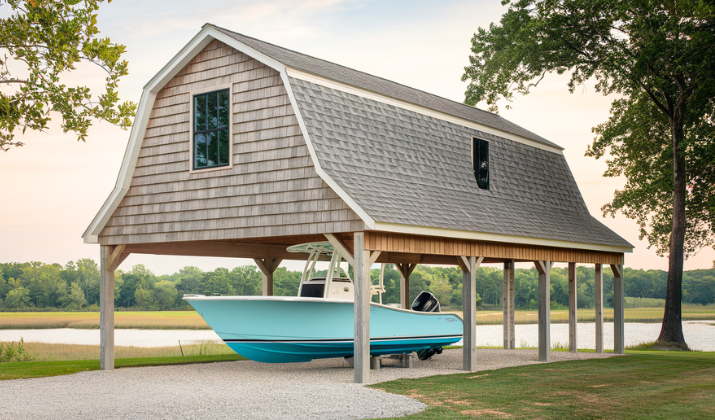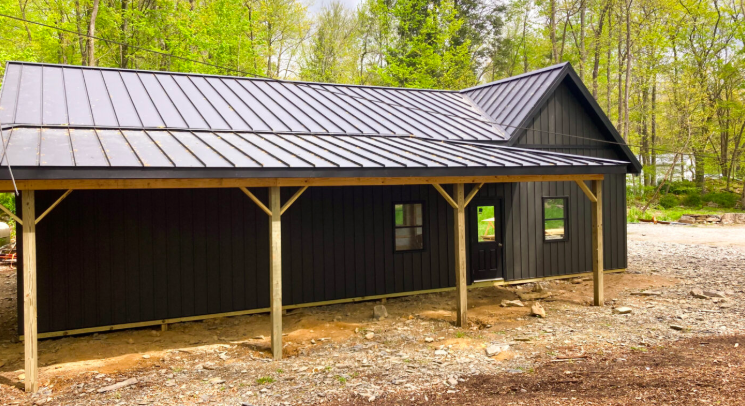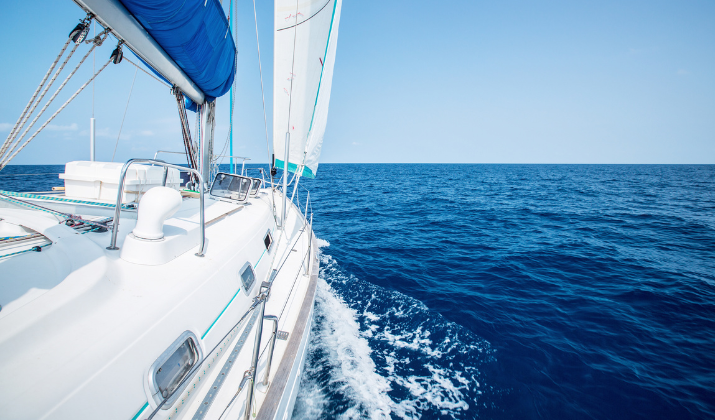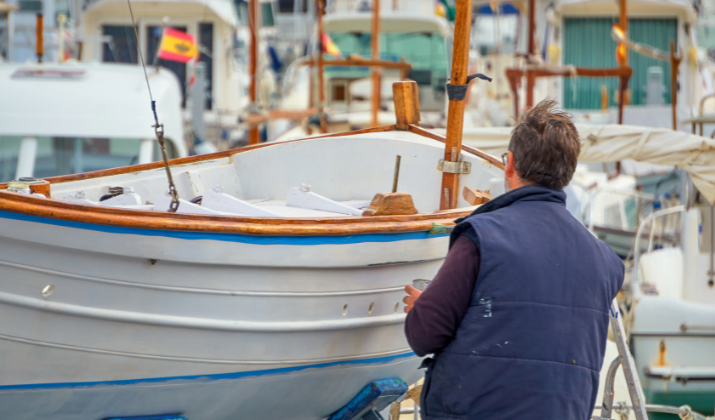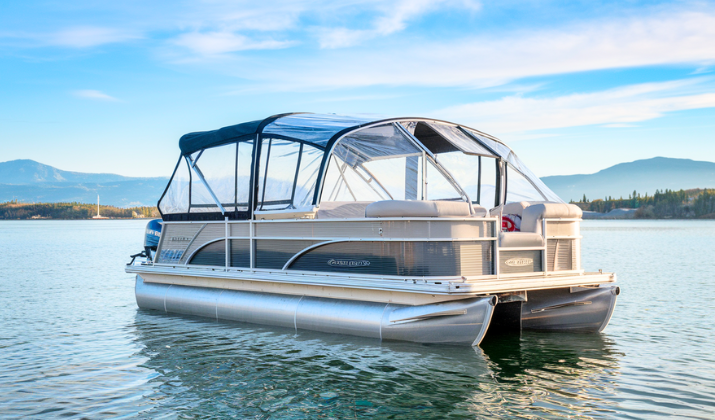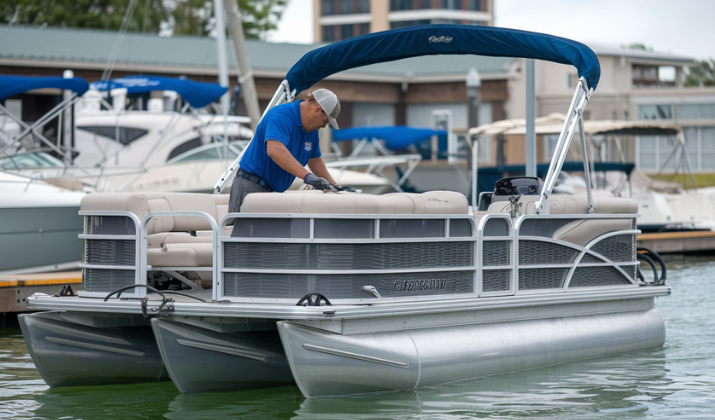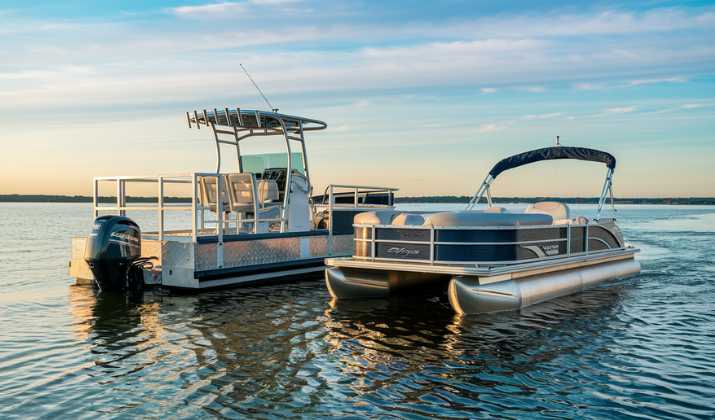Your boat represents a significant investment, and protecting it from the elements is crucial for maintaining its value and ensuring years of reliable service on the water.
While marina storage and boat covers provide some protection, nothing beats the comprehensive shelter of a well-designed carport.
A boat carport shields your vessel from harmful UV rays, prevents water damage from rain and snow, and keeps debris from accumulating on deck surfaces.
Whether you’re dealing with a small fishing boat or a larger cabin cruiser, the right carport design can extend your boat’s lifespan while making maintenance easier and more convenient.
Building your own boat carport doesn’t have to be an overwhelming project.
With the right materials, basic construction skills, and a clear plan, you can create a sturdy, functional shelter that fits your budget and space requirements.
The key is choosing a design that matches your boat’s dimensions, your property’s layout, and your local weather conditions.
From simple lean-to structures to more elaborate gable-roof designs, there are options suitable for every skill level and budget range.
Take a look at some of the boat carport ideas you would want to try.
Also Read: Simple & Affordable Boat Shed Ideas
1. Basic Lean-To Carport
The lean-to carport represents the simplest and most cost-effective approach to boat protection.
This design features a single-slope roof that attaches to an existing structure like your garage, house, or storage building on one side while being supported by posts on the other.
The slanted roof allows rain and snow to shed naturally, preventing water accumulation that could lead to structural problems.
Construction typically involves setting concrete footings for the support posts, installing a beam to connect the posts, and attaching rafters that span from the existing structure to the new beam.
The roof can be covered with metal sheeting, polycarbonate panels, or even heavy-duty tarps for budget-conscious builders.
This design works particularly well for smaller boats and provides excellent protection while requiring minimal materials and construction time.
Check Out: Boat Maintenance Tips
2. Gable Roof Carport
A gable roof carport offers superior protection and a more traditional appearance compared to lean-to designs.
This freestanding structure features two sloping roof surfaces that meet at a central ridge, creating a triangular profile that effectively sheds water and snow while providing maximum headroom.
The symmetrical design distributes weight evenly across the structure, making it inherently stable and suitable for areas with heavy snow loads or high winds.
Construction involves setting posts at each corner, installing top plates to connect the posts, and building triangular trusses to support the roof decking.
The gable design also allows for ventilation at the peak, which helps prevent moisture buildup and reduces the risk of mold or mildew forming on your boat.
While more complex than a lean-to, the gable roof carport provides excellent long-term value and can accommodate larger boats with tall superstructures.
Also Read: Best Outdoor Kayak Storage Bags
3. Metal Frame Carport
Metal frame carports combine strength, durability, and relatively easy assembly into an attractive package for boat owners.
These structures typically use galvanized steel tubing or aluminum framing that resists corrosion and requires minimal maintenance over time.
The metal framework can support various roofing materials, from corrugated metal sheets to polycarbonate panels, depending on your aesthetic preferences and budget.
Many metal frame kits come pre-engineered with pre-cut components and detailed instructions, making them accessible to DIY builders with basic tools.
The precise manufacturing of metal components ensures square, level construction that may be challenging to achieve with traditional lumber framing.
Additionally, metal frames can span longer distances without intermediate support posts, providing more flexibility in boat positioning and easier maneuvering during launch and retrieval.
Explore: Kayak Maintenance Tips
4. Pole Barn Style Carport
Image – ExtremePoleBuildings
The pole barn construction method offers an economical approach to building a large, sturdy boat carport without the expense of a traditional foundation.
This technique involves setting pressure-treated posts directly into the ground or concrete footings, then attaching horizontal girts and roof trusses to create a robust framework.
The pole barn style excels at covering large areas with minimal materials, making it ideal for multiple boats or boats with significant beam width.
The post-frame construction naturally handles wind and snow loads effectively, as the buried posts provide excellent stability against lateral forces.
Builders can customize the design with various siding options, from board-and-batten to metal sheeting, or leave the sides open for maximum ventilation and easy boat access.
This construction method also allows for easy future modifications, such as adding doors, windows, or electrical service.
Explore: Taking Care of Your Inflatable Kayak
5. Cantilever Carport
A cantilever carport design eliminates the need for posts along one or both sides of the structure, creating an open, unobstructed space for boat parking and maneuvering.
The approach uses strong beams and strategic engineering to extend the roof beyond the supporting posts, similar to how a diving board extends over water.
Cantilever design is particularly valuable when you need to position your boat close to existing structures or when ground conditions make post installation difficult on certain sides.
Construction requires careful attention to structural engineering, as the cantilevered sections must be properly supported to handle wind and snow loads safely.
The result is a clean, modern appearance that maximizes usable space while providing excellent protection. This design works especially well for waterfront properties where you want to minimize visual obstruction of water views.
Check Out: Boat Flooring Mistakes To Avoid
6. Portable Carport
Portable carports offer the ultimate flexibility for boat owners who rent property, frequently relocate, or need temporary protection solutions.
These structures typically feature lightweight aluminum or steel frames that bolt together without permanent foundations, allowing for quick assembly and disassembly.
The fabric or tarp covering can be easily removed for storage or replacement, and the entire structure can be relocated as needed.
Modern portable carports have evolved beyond simple tarps, with many featuring UV-resistant, waterproof covers that provide excellent protection from the elements.
While not as robust as traditional construction, portable carports can be surprisingly durable and offer significant cost savings.
They’re particularly useful for seasonal boat storage, temporary protection during repairs, or situations where building permits might be difficult to obtain.
7. Attached Carport
An attached carport integrates seamlessly with your existing garage or home structure, sharing a common wall and often tying into the existing roofline.
This design approach maximizes space efficiency and can be more cost-effective than building a separate structure, as it utilizes existing foundations and structural elements.
The attached design also provides convenient access between your boat and other storage areas, making it easier to transfer gear, perform maintenance, or access utilities.
Construction typically involves extending the existing roof structure or building a complementary roofline that matches the architectural style of your home.
Proper flashing and weatherproofing are critical where the new structure meets existing walls to prevent water infiltration.
The attached carport can also enhance your property’s value by creating a cohesive, planned appearance rather than an afterthought addition.
Also Read: Ways To Store A Kayak In Garage
8. Hip Roof Carport
A hip roof carport features four sloping surfaces that meet at a central ridge or peak, creating a pyramid-like profile that offers excellent weather protection from all directions.
This design is particularly effective in areas prone to high winds, as the sloping surfaces on all sides help deflect wind forces rather than catching them like a vertical wall might.
The hip roof also provides superior snow load distribution and creates an elegant, finished appearance that complements many architectural styles.
Construction is more complex than gable or lean-to designs, requiring precise cuts for the hip rafters and careful attention to the ridge and hip connections.
However, the result is a structure that handles weather extremes exceptionally well while providing maximum protection for your boat.
The hip roof design also allows for consistent height around the perimeter, which can be advantageous for boats with tall outboard motors or tower structures.
Check Out: Storing A Kayak Outside In Winter
9. Gambrel Roof Carport
The gambrel roof design, sometimes called a barn roof, features two different slopes on each side, with the lower section being steeper than the upper section.
This configuration maximizes interior height while maintaining a relatively low overall profile, making it ideal for boats with tall towers, T-tops, or other vertical structures.
The gambrel design also provides excellent headroom for maintenance activities while using less material than a traditional gable roof of equivalent interior height.
Construction involves building trusses with the characteristic bent profile, which requires more complex cutting and assembly than simple gable trusses.
The reward is a distinctive, attractive structure that provides superior clearance and can accommodate larger boats or additional storage above.
The gambrel roof also sheds water effectively and can support snow loads well when properly engineered.
Also Read: Boat Shed Lighting Hacks
10. Solar Panel Carport
A solar panel carport combines boat protection with renewable energy generation, creating a dual-purpose structure that can help offset electricity costs while sheltering your vessel.
The roof structure is specifically designed to support solar panels at the optimal angle for your location, typically involving a south-facing slope in northern climates.
The electrical components must be properly installed and inspected according to local codes, but the result is a structure that pays for itself over time through energy savings.
Its construction considerations include ensuring adequate structural support for the additional weight of solar panels, proper electrical conduit routing, and compliance with utility interconnection requirements.
The solar carport approach is particularly attractive for environmentally conscious boat owners and can significantly enhance property value while providing excellent boat protection.
Modern solar panels are quite durable and can withstand the same weather conditions that threaten your boat.
Also Read: Best Kayak Dock Storage Ideas
Conclusion
Protecting your boat with a well-designed carport is one of the smartest investments you can make as a boat owner.
The ten designs outlined above offer solutions for virtually every situation, from budget-conscious temporary shelters to permanent structures that enhance your property’s value and functionality.
The secret lies in carefully assessing your specific needs, including your boat’s dimensions, your property’s characteristics, local weather patterns, and your construction skills and budget.
Before beginning any carport project, take time to research local building codes and permit requirements, as these vary significantly by location.
Consider consulting with a structural engineer for larger or more complex designs, especially in areas prone to severe weather.

